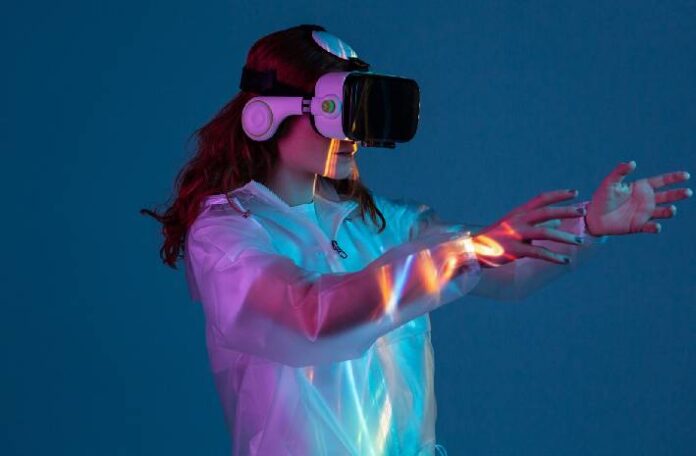In 2016, a young gamer named Alex donned his newly acquired virtual reality headset, skeptical yet curious about the buzz surrounding this technology. As he stepped into a virtual arena, the game transformed from a simple screen into an immersive world filled with vibrant landscapes and lifelike characters. Within minutes, Alex was not just playing a game. He was living an experience, battling opponents in a realm where anything was possible. This moment marked the beginning of a journey that would forever change his perception of gaming, education, and even social interaction. Today, virtual reality (VR) poised to revolutionize industries far beyond gaming.
What is Virtual Reality?
Virtual reality refers to a computer-generated simulation that immerses users in a three-dimensional environment, allowing them to interact with that space in real-time. Utilizing specialized equipment like headsets and motion controllers, VR transports users into a world that feels strikingly real.
The Growing Popularity of Virtual Reality
The rise of virtual reality backed by impressive statistics. According to a report by Statista, the global VR market projected to reach $44.7 billion by 2024. It growing from $15.81 billion in 2020, with a compound annual growth rate (CAGR) of 30.5%. This growth fueled by advancements in technology and an increasing range of applications beyond gaming.
Applications of Virtual Reality
- Gaming: The gaming industry was one of the first to adopt VR, creating immersive experiences that captivate players. In 2022, Oculus Quest 2, a popular VR headset, reported to have sold over 14 million units, making it a major player in the market.
- Education: VR is transforming how we learn. A study from PwC found that VR training can improve retention rates by 75% compared to traditional methods. Schools and universities are increasingly incorporating VR into their curricula to provide hands-on experiences in fields like science and history.
- Healthcare: In the medical field, VR used for surgical training, pain management, and patient therapy. According to a report from Deloitte, the global market for VR in healthcare expected to exceed $2 billion by 2025.
- Real Estate: Virtual reality is revolutionizing property viewing. A survey by the National Association of Realtors found that 77% of buyers reported a better understanding of properties through VR tours, making it a valuable tool for real estate agents.
Challenges and Considerations
Despite its benefits, the VR industry faces challenges. Issues such as motion sickness and the high cost of equipment can hinder widespread adoption. According to Virtual Reality Society, approximately 40% of users experience discomfort when using VR, which developers are working to mitigate.
The Future of Virtual Reality
The future of VR is incredibly promising. With the advent of 5G technology, the potential for more seamless and immersive experiences is on the horizon. A report by IDC projects that spending on VR and augmented reality (AR) will reach $198 billion by 2025, showcasing a growing investment in this technology.
Conclusion
Alex’s journey into the world of virtual reality is just one example of how this technology is reshaping our interactions with the digital realm. As VR continues to evolve and expand its applications, it will open doors to new experiences, from education to healthcare, enhancing our understanding and engagement with the world around us. The immersive possibilities of virtual reality are endless, and its impact on our daily lives is just beginning.
